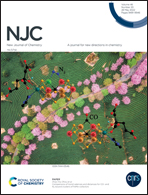Structure-guided insights into non-catalytic (α-hydroxy)alkylation of olefins with alcohols
Abstract
New “olefin–alcohol” pairs were involved in the non-catalytic (α-hydroxy)alkylation process at 350 °C – the addition reaction of MeOH, EtOH or 2-PrOH to styrene, cyclohexene, 1-heptene, and limonene to produce carbon-chain elongated alcohols. The contribution of different side reactions (transfer hydrogenation, alcohol dehydration, C-alkoxylation, etc.) was described for the first time, and the chemo- and regio-selectivity was evaluated for each pair. As proof-of-concept, the ability of an olefinic precursor to participate in a two-step elimination–(α-hydroxy)alkylation tandem reaction with alcohols was confirmed: isobutylene generated in situ from tert-butanol at 350 °C reacted with MeOH to give two isomeric alcohols (isoamyl and neopentyl alcohols) with 34% selectivity.



 Please wait while we load your content...
Please wait while we load your content...